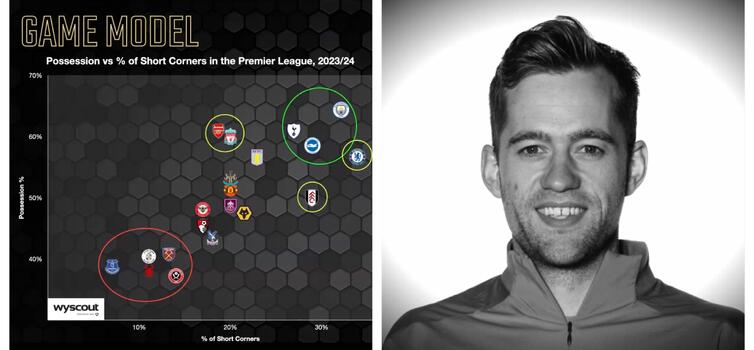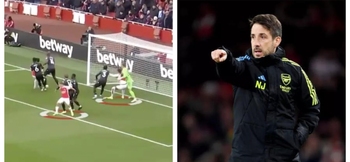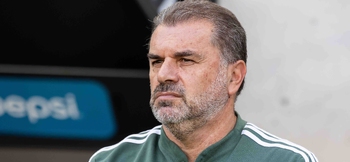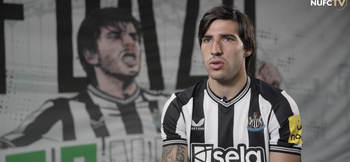Billy Coulston: Incorporating set pieces into your game model

'The data supports the belief that the elite teams are using set plays to support their open play philosophy.'
Written by Billy Coulston — April 16, 2024
Do you have a game model for your team and does it include set plays? If so, is there any real detail to support that?
Game models (basically a defined and detailed way of playing) have become more and more popular in football over the last five to 10 years. I would be looking to include attacking set plays as part of my in-possession work and defending set plays as part of my out-of-possession work, so they’re not separate things that you work on, but part of your overall game model.
Last November, Luke Williams - who was manager of Notts County at the time and has since moved to Swansea City - was asked why his team took so many short corners. Since the 2019/20 season, Notts County had taken 77% of their corners short, which was 22% more than any other team in League Two in that timeframe.
He said: “When you play against Notts County, one of the issues that you have is that the ball is in play for longer than any other game in the EFL. So you will notice that the players have been instructed that they sprint - poor little Azza (Aaron Neman), he sprints, gets the ball, puts it down, passes it immediately so you don't get a break.
“Some of the defenders - many of the defenders - love corners, because they can have a rest. They're six foot free, so they don't want Dan Crowley running at them or Azza running behind them.
“They definitely don't want Macca (Macaulay Langstaff) in the box free and scoring 42 goals from open play, right? So we take the ball, put it down, immediately pass the ball, and the defender thinks, ‘Ah, again. Come on, just kick it into the goalkeeper's hands so we can smash it the length of the pitch and break.’
“No, not going to happen, I'm afraid, I'm sorry. We kicked one directly into the box last season and Macca scored. You know why? Because everybody was at the corner trying to stop us playing short. So I'm sorry to break everyone's hearts, but this is the reality that we are extremely successful from corners.”

This article is taken from Billy Coulston's Set Piece Masterclass. His 2-hour+ follow-along session covers:
- The 14 different types of set play.
- The importance of set plays.
- Incorporating sets plays into your game model.
- Analysing, planning and executing set plays with an elite team.
- How to create set piece routines and visualise them as still diagrams and moving animations.
You will also get:
- Free Creative Set Plays Template (Powerpoint and Keynote) to design your own set piece routines (we will email these to you).
- 30% discount on 50 Creative Set Plays to take your learning further.
It was a really interesting answer and these were the key things I pulled out from it. Firstly, the fact that Williams was trying to use set plays to contribute to his team's overall style of play. He talked about using corners to build intensity within games and using set plays to support the wider game model.
Secondly, he was using set pieces to play to individual player’s strengths. He spoke about using set plays to get a quick player to run in behind, or creating a one-v-one situation for a technically strong player.
He also spoke about stopping the opposition winning the ball quickly and counter-attacking - so using attacking set plays to nullify the opposition's strengths. There was also the example he used of the opposition going all-in on stopping a short corner, giving his team that flexibility to adapt based on the scenario within the game - so when everyone came short to defend, Notts County put it in the box and scored.
That PERFECT short corner response. ????#Notts pic.twitter.com/phfMjpVq9P
— K-Ci Rennicks (@KRennicks40) November 22, 2023
Finally, Williams raised a really interesting point about the complexity of defining what is classed as a set play goal. If you play a corner or a free kick short and make 20 passes before scoring, is that a set play goal?
Likewise, if you deliver a ball directly into the box, then there are two or three phases where the opposition clear it and then you score, is that a set play goal? We definitely need to be aware of what we're defining as set play goals when we start looking at the data.
So let's look at some data from the Premier League. This is from the current season and is really interesting. This graph here shows you the amount of possession teams have had in relation to the percentage of corners that they play short.
There's a clear correlation between the teams that have more possession taking a higher percentage of their corners short and using them to support their wider game model. Manchester City, Tottenham and Brighton take a really high percentage of their corners short.
And the teams with low possession, so Everton, Luton, Sheffield United, they're the teams that don't take many short corners. There are a couple of slight outliers. You look at Arsenal, Liverpool - they have a lot of possession, but they don't take as many short corners as perhaps you would expect.
They've obviously got a slightly different plan of going more direct, and Arsenal in particular have been hugely successful from corners this season. Likewise, you've got Fulham, who are a team that rank slightly lower in terms of possession, but they take a lot of short corners.
Overall, the data supports the belief that the elite teams are using set plays to support their open-play philosophy. If you wanted to create your own set play game model, what are the sorts of things you would need to look at? I would say these four questions:
- What are we trying to achieve?
- What is the team structure that’s required to achieve the outcome?
- What are the individual roles that need to be fulfilled within that structure?
- How flexible are we going to be with these ideas we’ve got?
If we start relating all of that information into the 14 different types of set play, both in and out of possession, then you’re starting to build a really detailed piece of content about your set play game model.
- BILLY COULSTON worked for Newcastle United for a decade, as Opposition Scout, Pre-Match Analyst and Post-Match and Individual Player Development Analyst. In April 2022 he was appointed Customer Success Manager for Elite Football at Hudl. Billy has always been passionate about enhancing set pieces and is the founder of Creative Set Plays, which aims to inspire managers, coaches, analysts and players at all levels about this key area of the game. You can find them on Twitter at @CreativeSetPlay












